Sample Submission fo Diagnostic testing
1/33
There's no tags or description
Looks like no tags are added yet.
Name | Mastery | Learn | Test | Matching | Spaced |
|---|
No study sessions yet.
34 Terms
For all submissions what should be included at minimum
Patient name, age, species/breed, gender, type of sample, test requested
For all submissions what other information should be included
significant clinical findings, length of clinical signs, disease in other animals in household
What information should be included on the label
Patient name
Date collected
Type of sample
Necropsy submission should include
Complete history, including TOD
if private cremation
system(s) of interest
if you need fresh tissues
if you want any ancillary testing
Signature
What should you not do for a necropsy submission
freeze
Anatomic pathology biopsy should be
submitted in formalin
Histopathology samples
should be placed in a fixative immediately after collection and prior to submission
Fixation
Provides a snapshot in time of cellular events
Critical for maintaining tissue architecture
Stops autolysis and bacterial overgrowth which inhibit histological examination
10% formalin is preferred and is readily available pre-made (often already aliquoted into specimen containers)
Alcohol can be used in a pinch but is NOT recommended
Must fix at least 24 hours before processing in the laboratory
Histopathology containers
should be firm plastic bottles with a wide opening and tight screw-top lids
Histopathology tissue size
1 cm or less in any ONE dimension
Why does histopathology tissues need to be a certain size?
formalin only penetrates 0.5cm into tissue
What ratio of fixative is used for histopathology
10 parts formalin to 1 part tissue
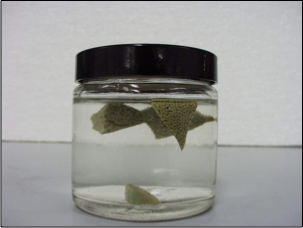
Is this appropriate for histopathology testing?
Yes

Is this appropriate for histopathology testing?
No
Tips for Histopathology
Do not grab the tissue with forceps as it causes crush artefact
Place the formalin container in a separate plastic sealable bag/additional container with absorbable material in case it leaks
Make sure submission form is COMPLETELY filled out and place this in a separate plastic sealable bag
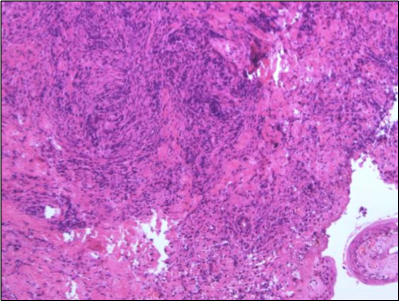
What type of artefact does this image show?
Crush - smearing of cells inhibits identification
What should you do if you want to submit a large tissue specimen?
“bread-loaf” the specimen to allow formalin to penetrate as much of the tissue as possible
fix in an appropriate volume of formalin at your practice
you may need to replace with fresh formalin after 24 hrs, particularly with bloody tissue as the blood will bind up all the formalin
then send to lab in a smaller volume of formalin AFTER tissue is adequately fixed
What should you do if you want to submit a small tissue specimen?
Use screened cassette or cassette pads
do not just place in formalin jar
From Tissue to Slide: Step 1
Once fixed, tissues are trimmed and placed into cassettes
From Tissue to Slide: Trimmed and in cassettes
placed in an overnight processor that replaces the water with paraffin
From Tissue to Slide: In overnight processor
Tissues are embedded in fresh wax in a mold and are cooled
From Tissue to Slide: Cooled Mold
blocked are then placed in a microtome and very thin slices are made
From Tissue to Slide: Slices Made
Paced on glass slides and stained
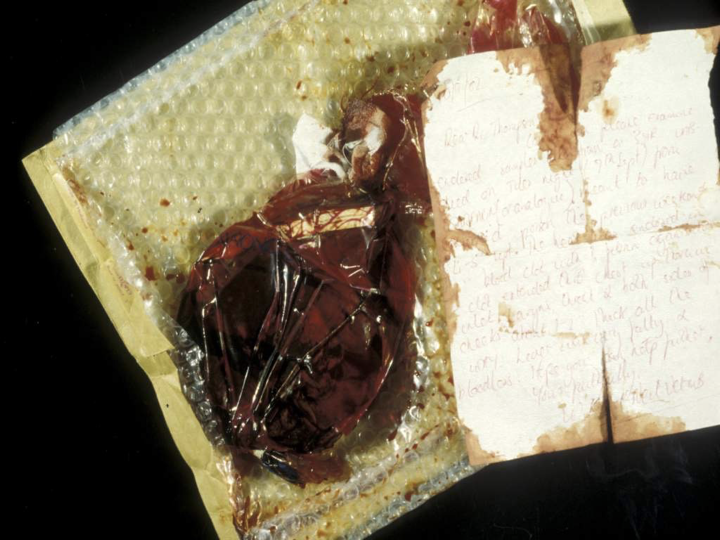
What does this image show?
An unfixed sampled sent by practitioner
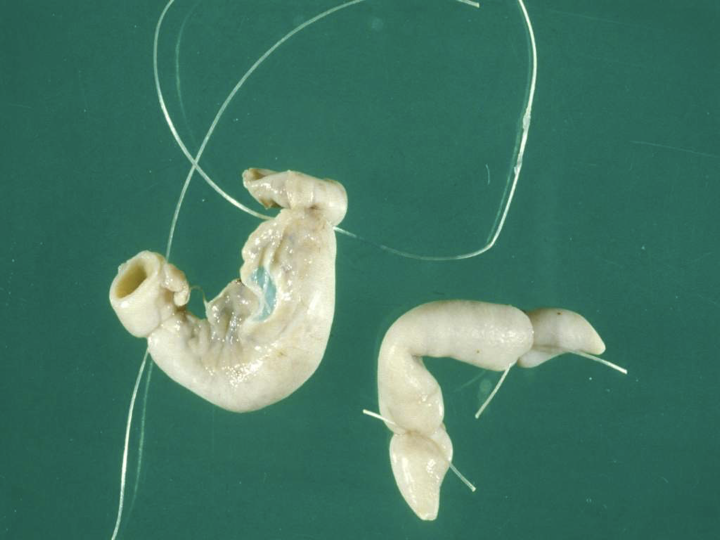
What does this image show
Fixed specimens - unfortunately the center will not be fixed
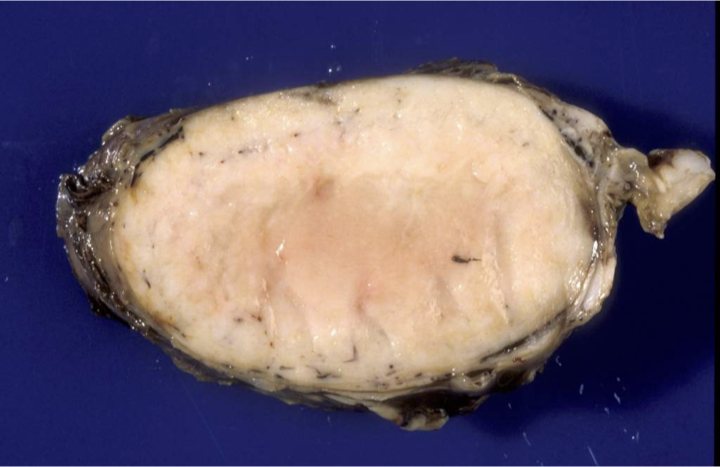
What does this image show?
sample is too large and the center is raw and unfixed

What does this image show?
Sample in narrow necked bottle
Specimens expand when fixed and cannot be taken back out
Bacteriology or Virology sample submission
tissue preferred over swabs
in sealable plastic container
overnight ship on ice
can be affected by autolysis and PM overgrowth
Bacteriology or Virology sample size
1 cm cube fresh tissue
Bacteriology or Virology swabs
make sure to use appropriate tube for test
Intestinal Bacteriology Sample requirements
Section and tie off 2-3 in apart
cut on either side of ties
submit on ice overnight
Toxicology sample submission size
minimum 50g tissue
if liquid at least 5 mls
Toxicology sample submission
place in whirl-pack or sealable plastic bag
if liquid in sealable plastic container or blood tube with no additive
tissue needed depends on test desired, call first
Parasitology sample size
100g feces